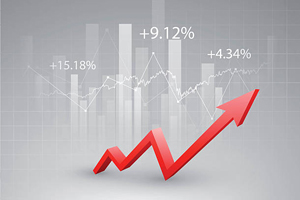Investing in Sustainable and Ethical Funds – What You Need to Know
Explore the realm of sustainable and ethical investing in this comprehensive guide Discover the principles of integrating environmental, social, and governance (ESG) criteria into your investment decisions Navigate the benefits and challenges, including insights on constructing a diversified sustainable portfolio Gain answers to common questions, empowering you to make informed and impactful investment choices that align with your values Dive into the world of ethical investing with our insightful exploration
Welcome to the world of sustainable and ethical investing, where financial decisions go beyond traditional profit considerations. In this comprehensive exploration, we delve into the principles and practices that define sustainable and ethical investing, aiming to empower you with the knowledge needed to make informed investment choices that align with your values.
Defining Sustainable and Ethical Investing:
At its core, sustainable and ethical investing involves integrating environmental, social, and governance (ESG) criteria into investment decisions. Investors embark on a journey to support companies and initiatives that prioritize sustainability, social responsibility, and ethical business practices. This paradigm shift goes beyond mere financial gains, focusing on the positive impact investments can have on the world.
Exploring ESG Criteria:
We navigate the intricacies of ESG criteria, shedding light on how these factors guide investment choices. From environmental considerations such as carbon footprint and resource usage to social factors like labor practices and community engagement, and governance principles ensuring ethical decision-making at the corporate level — we dissect the key components that define sustainability in investing.
Benefits and Challenges:
Discover the potential benefits and challenges associated with sustainable investing. Learn how these investments can contribute to positive environmental and social change while considering the risks involved. We address concerns like greenwashing, assess the impact on financial returns, and provide insights to help you navigate the dynamic landscape of ethical investing.
Constructing a Diversified Portfolio:
Building on these foundations, we guide you through the process of creating a diversified sustainable investment portfolio. Explore strategies for asset allocation, geographic and sectoral diversity, and risk management tailored to the unique challenges of sustainable investing. Understand how to incorporate impact measurement, metrics, and regular portfolio reviews for optimal outcomes.
Answering Common Questions:
As we conclude, we address common questions about sustainable and ethical investing in our FAQ section. From understanding the essence of these investments to evaluating funds based on ESG criteria and managing associated risks, we provide answers to empower you on your journey towards making impactful and financially sound investment decisions.
Embark on this enlightening journey with us as we unravel the intricacies of sustainable and ethical investing, empowering you to align your financial goals with a positive contribution to the world.

Understanding Sustainable and Ethical Funds
Defining Sustainable and Ethical Investing
Sustainable and ethical investing represents a conscious effort to integrate financial goals with a commitment to societal and environmental well-being. Let's break down this approach further:
1. Core Principles: At its core, sustainable and ethical investing revolves around principles that prioritize social responsibility and environmental stewardship. Investors actively seek out opportunities that align with their values, fostering positive change while seeking financial returns.
2. Values-Based Decision Making: Investors often base their decisions on a set of personal or institutional values. This may include avoiding investments in industries such as tobacco, weapons, or fossil fuels, and actively supporting companies that contribute positively to the world.
3. Impactful Investment Choices: The focus extends beyond financial gains to the impact investments have on broader societal and environmental issues. Investors aim to contribute to positive change by supporting companies that engage in sustainable practices, uphold human rights, and demonstrate ethical governance.
4. Long-Term Sustainability: Sustainable and ethical investing is characterized by a long-term perspective. Investors recognize that fostering sustainable business practices and ethical conduct can contribute to long-term financial success and resilience against evolving market dynamics.
5. Ethical Screening: Ethical screening is a common practice in this type of investing, where investors meticulously assess the ethical implications of potential investments. This screening process involves evaluating a company's conduct, product offerings, and overall impact on the world before making investment decisions.
6. Positive Reinforcement: Investors engaging in sustainable and ethical investing view their financial contributions as a form of positive reinforcement. By allocating funds to companies that prioritize sustainability and ethical practices, investors aim to incentivize positive change in the business landscape.
Understanding sustainable and ethical investing involves embracing a holistic perspective that combines financial acumen with a commitment to creating a better world through conscientious investment choices.
Environmental, Social, and Governance (ESG) Criteria
Environmental, Social, and Governance (ESG) criteria form the foundation of sustainable and ethical investing, providing a comprehensive framework for evaluating a company's impact on various fronts. Let's delve into each component of the ESG criteria:
1. Environmental Criteria:
Environmental considerations assess a company's practices in relation to the planet. This includes evaluating its carbon footprint, energy efficiency, waste management, and overall commitment to sustainable practices. Companies with strong environmental criteria actively work to reduce their ecological impact, embracing initiatives that promote environmental conservation and resource efficiency.
2. Social Criteria:
Social criteria encompass how a company interacts with its stakeholders, employees, and the communities in which it operates. Evaluations in this category include fair labor practices, diversity and inclusion policies, community engagement, and social justice initiatives. Companies with high social criteria prioritize creating a positive social impact, fostering inclusive workplaces, and contributing to the well-being of the communities they serve.
3. Governance Criteria:
Governance criteria evaluate a company's leadership, transparency, and adherence to ethical business practices. This includes scrutinizing the composition and independence of the board, executive compensation structures, and overall corporate governance. Companies with strong governance criteria prioritize accountability, ethical decision-making, and policies that protect shareholder rights.
4. Integration of ESG Factors:
Effective sustainable and ethical investing involves the integration of ESG factors into the investment decision-making process. Fund managers and investors consider a company's ESG performance alongside traditional financial metrics to gain a comprehensive understanding of its overall sustainability and ethical standing.
5. ESG Ratings and Scores:
Various organizations provide ESG ratings and scores for companies, offering investors a standardized way to assess ESG performance. These scores consider a range of factors within the ESG framework and can guide investors in making informed decisions aligned with their values.
By examining a company's Environmental, Social, and Governance practices through the ESG criteria, investors can make more informed decisions that align with their values, contributing to a sustainable and ethical investment approach.
Benefits of Investing in Sustainable and Ethical Funds
Positive Impact on the Environment and Society
Investing in sustainable and ethical funds is driven by the desire to create a positive impact on both the environment and society. Let's explore the multifaceted ways in which these investments contribute to positive change:
1. Environmental Conservation:
Sustainable funds often channel investments into companies committed to environmental conservation. This can involve supporting businesses engaged in renewable energy, energy efficiency, and sustainable resource management. By doing so, investors contribute to the global effort to address climate change and reduce ecological footprints.
2. Social Responsibility:
Investments with a focus on social responsibility target companies that prioritize fair labor practices, diversity and inclusion, and community development. By supporting such businesses, investors actively participate in fostering positive workplaces, promoting equal opportunities, and contributing to the well-being of local communities.
3. Ethical Governance:
Companies with ethical governance practices exhibit transparent decision-making, responsible leadership, and policies that prioritize ethical conduct. Sustainable and ethical funds support businesses with strong governance structures, contributing to the overall improvement of corporate governance standards. This, in turn, enhances trust among stakeholders and protects shareholder rights.
4. Innovation and Technology:
Many sustainable funds invest in companies driving innovation in environmental and social solutions. This includes businesses focused on developing eco-friendly technologies, sustainable agriculture practices, and healthcare advancements. Investments in such enterprises contribute to the growth of industries that address pressing global challenges.
5. Community Engagement:
Sustainable and ethical investments often prioritize companies actively engaged in community initiatives. This can involve supporting businesses that contribute a percentage of their profits to social causes, participate in philanthropy, or support local development projects. These investments become a catalyst for positive change at the grassroots level.
Overall, the positive impact of sustainable and ethical funds extends beyond financial returns, aligning investments with values and contributing to a more sustainable, equitable, and socially responsible world.
Long-Term Financial Performance
Investing in sustainable and ethical funds not only aligns with ethical values but also has the potential to deliver strong long-term financial performance. Let's explore the various aspects that contribute to the sustained financial success of such investments:
1. Risk Mitigation:
Sustainable and ethical funds often exhibit lower risk profiles compared to traditional investments. By avoiding companies with poor ESG practices, these funds can be more resilient in the face of environmental, social, and governance-related risks. This risk mitigation strategy contributes to the long-term stability of the investment portfolio.
2. Brand Resilience:
Companies with robust sustainability practices tend to build resilient and reputable brands. Sustainable and ethical funds invest in businesses that prioritize positive relationships with customers, employees, and the broader community. A strong and resilient brand contributes to customer loyalty and can positively impact financial performance over the long term.
3. Innovation and Adaptability:
Many sustainable investments focus on innovative and adaptive companies. These businesses are often at the forefront of technological advancements and are better equipped to navigate changing market landscapes. Investing in companies with a commitment to innovation enhances the potential for long-term growth and financial success.
4. Regulatory Compliance:
Companies adhering to sustainable and ethical practices are often proactive in complying with evolving regulations. By investing in such companies, sustainable and ethical funds position themselves favorably in the face of regulatory changes. This compliance contributes to long-term financial stability by avoiding legal and reputational risks.
5. Growing Consumer Demand:
As consumer awareness of sustainability and ethical considerations grows, companies adopting such practices are likely to experience increased demand for their products and services. Sustainable and ethical funds benefit from this trend, as the companies they invest in are positioned to capitalize on a growing market, contributing to long-term financial success.
By integrating ethical considerations with financial analysis, sustainable and ethical funds aim for financial success that extends well into the future, providing investors with both value alignment and robust returns.
Considerations Before Investing
Evaluating ESG Criteria of Funds
When considering sustainable and ethical funds, a crucial aspect is evaluating the Environmental, Social, and Governance (ESG) criteria that guide their investment decisions. Let's explore the comprehensive breakdown of how investors can assess these criteria:
1. ESG Integration:
Investors should understand how a fund integrates ESG factors into its investment process. This involves examining whether the fund actively considers environmental, social, and governance criteria alongside traditional financial metrics. Funds with a well-integrated ESG approach are more likely to make informed and responsible investment decisions.
2. Transparent Reporting:
Look for funds that provide transparent and comprehensive reporting on their ESG practices. Transparent reporting includes disclosing the specific ESG metrics considered, the methodology used for evaluation, and the impact of these criteria on the fund's investment decisions. Transparent reporting enhances accountability and helps investors make informed choices.
3. ESG Rating Agencies:
Consider researching the ESG ratings assigned to the fund by reputable agencies. These agencies assess the fund's holdings based on various ESG criteria and provide a standardized rating. Investors can use these ratings as a benchmark to gauge the fund's commitment to sustainability and ethical practices.
4. Engagement with Companies:
Examine whether the fund actively engages with the companies it invests in regarding their ESG practices. Funds that engage with companies demonstrate a commitment to influencing positive change. Engagement can include dialogues with company management, voting on ESG-related shareholder resolutions, and advocating for improved sustainability practices.
5. Sector-Specific Considerations:
Recognize that different sectors face unique ESG challenges. Evaluate whether the fund considers sector-specific ESG considerations and tailors its approach accordingly. Funds that take a nuanced approach to ESG criteria, considering sector-specific challenges and opportunities, demonstrate a more comprehensive understanding of sustainability issues.
6. Active Stewardship:
Assess whether the fund practices active stewardship in overseeing its investments. Active stewardship involves ongoing monitoring, engagement with companies, and voting on ESG matters. Funds that actively steward their investments are better positioned to address evolving sustainability challenges and contribute to positive change over the long term.
Evaluating the ESG criteria of funds is a critical step for investors seeking to align their investments with sustainable and ethical principles, ensuring that their financial choices contribute to positive environmental, social, and governance outcomes.
Risk and Return Analysis
Conducting a thorough risk and return analysis is essential when considering investments in sustainable and ethical funds. Let's delve into the comprehensive breakdown of how investors can assess the balance between risk and return in the context of these funds:
1. Historical Performance:
Review the historical performance of the fund to understand its track record in generating returns. Assess whether the fund has demonstrated consistent performance over various market conditions. While past performance doesn't guarantee future results, it provides insights into the fund's resilience and ability to navigate different market scenarios.
2. Volatility and Risk Metrics:
Examine the fund's volatility and risk metrics, such as standard deviation and beta. Sustainable and ethical funds may exhibit different risk profiles compared to traditional funds. Understanding the fund's risk metrics helps investors assess the level of volatility and potential downside associated with the investment.
3. Impact of ESG Factors on Returns:
Analyze how the consideration of ESG factors influences the fund's returns. Sustainable and ethical funds often integrate ESG criteria into their investment process, aiming to mitigate risks associated with environmental, social, and governance issues. Understanding the impact of these factors on returns provides insights into the fund's commitment to responsible investing.
4. Diversification Benefits:
Evaluate the diversification benefits offered by the fund. Sustainable and ethical funds may provide exposure to industries and sectors that differ from traditional funds, offering a unique diversification opportunity. Assessing the fund's holdings and their correlation with broader market trends helps investors understand the diversification benefits of the investment.
5. Forward-Looking Risk Assessment:
Consider the fund's forward-looking risk assessment and scenario analysis. Funds that actively assess potential future risks, including those related to sustainability and ethical considerations, demonstrate a proactive approach to risk management. This analysis provides investors with insights into the fund's preparedness for emerging challenges.
6. Alignment with Risk Tolerance:
Align the fund's risk profile with your individual risk tolerance and investment objectives. Sustainable and ethical funds may appeal to investors with a long-term perspective and a desire for investments that align with their values. Ensuring alignment with personal risk tolerance enhances the likelihood of a successful and satisfactory investment experience.
By conducting a comprehensive risk and return analysis, investors can make informed decisions about sustainable and ethical funds, balancing financial objectives with the commitment to positive environmental, social, and governance outcomes.
Popular Sustainable and Ethical Funds
Overview of Notable Funds
Exploring notable sustainable and ethical funds provides investors with a comprehensive understanding of the available options and their unique characteristics. Let's break down the key considerations when overviewing these funds:
1. Fund Objectives and Philosophy:
Understand the overarching objectives and investment philosophy of each fund. Some funds may prioritize specific ESG themes, such as renewable energy, social justice, or corporate governance. Assess whether the fund's objectives align with your values and long-term investment goals.
2. ESG Screening Process:
Examine the fund's ESG screening process to identify the criteria used for selecting or excluding investments. Funds may employ positive screening, negative screening, or a combination of both. Positive screening involves actively selecting companies with strong ESG practices, while negative screening excludes companies with poor ESG performance.
3. Asset Class and Geographic Exposure:
Review the fund's asset class allocation and geographic exposure. Sustainable and ethical funds may provide exposure to specific sectors or regions aligned with ESG considerations. Assessing the fund's diversification across asset classes and geographic regions helps investors understand the potential risks and opportunities associated with the investment.
4. Performance Track Record:
Analyze the historical performance track record of each fund. Consider factors such as annual returns, volatility, and performance during market downturns. A thorough analysis of performance helps investors gauge the fund's ability to deliver returns in line with their financial objectives while adhering to sustainable and ethical principles.
5. Fee Structure and Expense Ratios:
Evaluate the fund's fee structure, including expense ratios and any additional fees. Sustainable and ethical funds may have cost structures that reflect the additional research and screening involved. Understanding the fees associated with each fund ensures transparency and helps investors make cost-effective investment decisions.
6. Manager Expertise and Commitment:
Assess the expertise and commitment of the fund manager to sustainable and ethical investing. A manager with a strong background in ESG considerations and a demonstrated commitment to responsible investing is more likely to navigate the complexities of the market while staying true to the fund's ethical principles.
By gaining a comprehensive overview of notable sustainable and ethical funds, investors can make well-informed decisions that align with their values and financial objectives, contributing to a more sustainable and ethical investment landscape.
Performance History and Ratings
Evaluating the performance history and ratings of sustainable and ethical funds is a crucial step in making informed investment decisions. Let's delve into a comprehensive breakdown of the key factors to consider when assessing the performance and ratings of these funds:
1. Historical Returns:
Examine the fund's historical returns over various time periods, including short-term and long-term performance. Analyzing returns provides insights into the fund's ability to generate consistent profits and navigate different market conditions. Consider comparing the fund's performance against relevant benchmarks for a more comprehensive assessment.
2. Risk-Adjusted Performance Metrics:
Utilize risk-adjusted performance metrics, such as the Sharpe ratio and Sortino ratio, to assess how well the fund has performed relative to the level of risk taken. Sustainable and ethical funds may prioritize risk management alongside returns, making these metrics valuable for understanding the fund's efficiency in delivering risk-adjusted performance.
3. Morningstar and ESG Ratings:
Refer to independent rating agencies like Morningstar for an objective evaluation of the fund's performance. Additionally, explore the Environmental, Social, and Governance (ESG) ratings assigned by reputable agencies. These ratings assess how well the fund aligns with ESG principles, providing investors with valuable insights into the fund's commitment to sustainability and ethical practices.
4. Consistency of Performance:
Assess the consistency of the fund's performance over different market cycles. Funds that exhibit a consistent track record of positive performance, even during challenging economic conditions, may indicate a well-managed and resilient investment option. Consider reviewing performance during both bull and bear markets for a more comprehensive analysis.
5. Peer Group Comparison:
Compare the fund's performance with its peers in the sustainable and ethical funds category. Understanding how the fund ranks within its peer group provides context and helps investors identify funds that stand out in terms of performance. Peer group comparison can highlight relative strengths and weaknesses.
6. Impact of ESG Factors on Performance:
Analyze how the consideration of ESG factors has influenced the fund's performance. Sustainable and ethical funds integrate ESG criteria into their investment process to mitigate risks and capitalize on opportunities. Understanding the impact of these factors on performance provides insights into the fund's ability to deliver both financial returns and positive societal and environmental outcomes.
By thoroughly examining the performance history and ratings of sustainable and ethical funds through these comprehensive factors, investors can make well-informed decisions aligned with their financial goals and ethical principles.
Challenges and Criticisms
Greenwashing Concerns
Greenwashing is a critical consideration when evaluating sustainable and ethical funds, as it involves misleading practices that may obscure the true environmental and social impact of an investment. Here's a comprehensive breakdown of factors related to greenwashing concerns:
1. Definition of Greenwashing:
Begin by understanding the concept of greenwashing. Greenwashing refers to the deceptive marketing or branding strategies used by financial products, including funds, to give the impression of environmental or social responsibility without substantiating these claims. Recognizing the various forms of greenwashing is essential for informed decision-making.
2. Scrutinizing Fund Disclosures:
Thoroughly examine the fund's disclosures, prospectus, and marketing materials. Look for specific information about the fund's sustainable and ethical practices, including its ESG criteria, engagement with companies, and any certifications or labels it claims to hold. Transparent and detailed disclosures can be indicative of a genuine commitment to responsible investing.
3. Independent Third-Party Verification:
Seek funds that undergo independent third-party verification of their ESG practices. Certifications from reputable organizations can provide assurance that the fund's sustainability claims are validated by external experts. Look for certifications such as the Global Reporting Initiative (GRI), the Principles for Responsible Investment (PRI), or specific industry-related certifications.
4. ESG Integration in Investment Process:
Assess how the fund integrates ESG factors into its investment process. Genuine sustainable and ethical funds incorporate ESG considerations throughout their investment decision-making, risk assessment, and portfolio construction. Understanding the depth of ESG integration helps distinguish between funds genuinely committed to responsible practices and those merely using greenwashing tactics.
5. Comparing Claims to Actions:
Evaluate whether the fund's stated ESG commitments align with its actual portfolio holdings and voting practices. Greenwashing often involves a misalignment between claims and actions. Scrutinizing the fund's holdings and engagement activities provides a more accurate picture of its dedication to sustainability and ethical principles.
6. Monitoring Media and Industry Analysis:
Stay informed about media reports and industry analyses regarding the fund's sustainable and ethical practices. Negative reports or controversies related to greenwashing may serve as red flags. Independent assessments and reviews from industry experts can provide additional perspectives on the fund's credibility.
By carefully considering these factors related to greenwashing concerns, investors can navigate the landscape of sustainable and ethical funds more effectively, ensuring their investments align with genuine environmental and social impact objectives.
Potential Trade-Offs with Returns
Investing in sustainable and ethical funds often involves considerations regarding potential trade-offs with returns. While these funds prioritize environmental, social, and governance (ESG) factors, investors should be aware of the nuanced relationship between sustainable practices and financial returns. Here's a comprehensive breakdown of the potential trade-offs:
1. ESG Integration and Performance:
Understand the impact of ESG integration on the fund's performance. While sustainable and ethical funds aim to contribute to positive societal and environmental outcomes, the incorporation of certain ESG criteria may affect the financial performance of the fund. Analyze how the fund balances its commitment to responsible practices with the pursuit of competitive returns.
2. Short-Term vs. Long-Term Returns:
Consider the time horizon for potential trade-offs. Sustainable investing is often viewed as a long-term strategy, and the benefits of ESG integration may not fully materialize in the short term. Investors should be willing to accept potential short-term fluctuations in returns for the prospect of long-term financial gains and positive impact on sustainability goals.
3. Sector and Industry Allocation:
Examine how sector and industry allocations may influence returns. Sustainable funds may avoid or underweight certain industries deemed unsustainable, impacting the fund's exposure to specific sectors. This intentional exclusion can result in varied performance compared to conventional funds, and investors should evaluate the potential impact on returns within the context of their investment objectives.
4. Risk Mitigation vs. Returns:
Assess how risk mitigation strategies may affect returns. Sustainable and ethical funds often prioritize risk management by considering ESG factors, potentially leading to reduced exposure to companies with high ESG-related risks. While risk mitigation is a key benefit, investors should weigh this against potential impacts on returns, particularly in dynamic market conditions.
5. Investor Values and Financial Goals:
Align personal values with financial goals. Investors should carefully consider their individual values and financial objectives when evaluating potential trade-offs. While sustainable investing aims to achieve a positive impact beyond financial returns, investors must find a balance that aligns with their values while working towards their financial aspirations.
6. Benchmarking and Performance Expectations:
Set realistic performance expectations and benchmark the fund's returns against appropriate benchmarks. Sustainable and ethical funds may exhibit different risk-return profiles compared to traditional funds. Understanding these differences and setting realistic expectations based on the fund's specific objectives and investment strategy is crucial for informed decision-making.
By comprehensively evaluating these potential trade-offs with returns, investors can make well-informed decisions that align with their financial goals and commitment to sustainable and ethical investing.
How to Get Started with Sustainable and Ethical Investing
Choosing the Right Brokerage or Fund Platform
When engaging in sustainable and ethical investing, selecting the appropriate brokerage or fund platform is a critical step. The platform you choose can significantly impact your ability to access a diverse range of sustainable funds and navigate the complexities of ESG investing. Here's a comprehensive breakdown to guide your decision-making process:
1. Research Available Sustainable Funds:
Begin by researching the sustainable funds available on different brokerages or fund platforms. Assess the diversity of funds offered, considering various investment styles, geographic focuses, and sectors. A comprehensive platform should provide a broad selection that aligns with your investment preferences and objectives.
2. ESG Data and Information:
Evaluate the availability and quality of ESG data and information on the platform. A reliable platform should offer detailed ESG metrics for each fund, allowing you to make informed investment decisions based on the environmental, social, and governance factors that matter most to you. Look for transparent reporting and disclosures.
3. Platform Fees and Expenses:
Consider the fee structure of the brokerage or fund platform. Evaluate the fees associated with buying, selling, and holding sustainable funds. While some platforms may offer competitive pricing, it's essential to understand the overall cost implications, including any additional fees specific to sustainable investing.
4. Account Features and Accessibility:
Assess the account features and accessibility of the platform. A user-friendly interface, robust mobile app, and easy account management tools can enhance your overall investing experience. Ensure that the platform aligns with your preferences and provides convenient access to your sustainable investment portfolio.
5. Educational Resources and Guidance:
Explore the educational resources and guidance offered by the platform. Sustainable investing may involve complex concepts, and a platform that provides educational materials, webinars, or expert insights can empower you to make well-informed decisions. Look for platforms that prioritize investor education in the realm of ESG investing.
6. Platform Reputation and Reviews:
Consider the reputation of the brokerage or fund platform. Look for reviews from other sustainable investors and assess the platform's overall reputation for reliability, customer service, and ethical business practices. A platform with positive reviews and a strong reputation is likely to provide a more satisfying investing experience.
By thoroughly considering these factors when choosing the right brokerage or fund platform, you can optimize your sustainable investing journey, aligning your values with a platform that meets your specific needs and preferences.
Choosing the Right Brokerage or Fund Platform
When engaging in sustainable and ethical investing, selecting the appropriate brokerage or fund platform is a critical step. The platform you choose can significantly impact your ability to access a diverse range of sustainable funds and navigate the complexities of ESG investing. Here's a comprehensive breakdown to guide your decision-making process:
1. Research Available Sustainable Funds:
Begin by researching the sustainable funds available on different brokerages or fund platforms. Assess the diversity of funds offered, considering various investment styles, geographic focuses, and sectors. A comprehensive platform should provide a broad selection that aligns with your investment preferences and objectives.
2. ESG Data and Information:
Evaluate the availability and quality of ESG data and information on the platform. A reliable platform should offer detailed ESG metrics for each fund, allowing you to make informed investment decisions based on the environmental, social, and governance factors that matter most to you. Look for transparent reporting and disclosures.
3. Platform Fees and Expenses:
Consider the fee structure of the brokerage or fund platform. Evaluate the fees associated with buying, selling, and holding sustainable funds. While some platforms may offer competitive pricing, it's essential to understand the overall cost implications, including any additional fees specific to sustainable investing.
4. Account Features and Accessibility:
Assess the account features and accessibility of the platform. A user-friendly interface, robust mobile app, and easy account management tools can enhance your overall investing experience. Ensure that the platform aligns with your preferences and provides convenient access to your sustainable investment portfolio.
5. Educational Resources and Guidance:
Explore the educational resources and guidance offered by the platform. Sustainable investing may involve complex concepts, and a platform that provides educational materials, webinars, or expert insights can empower you to make well-informed decisions. Look for platforms that prioritize investor education in the realm of ESG investing.
6. Platform Reputation and Reviews:
Consider the reputation of the brokerage or fund platform. Look for reviews from other sustainable investors and assess the platform's overall reputation for reliability, customer service, and ethical business practices. A platform with positive reviews and a strong reputation is likely to provide a more satisfying investing experience.
By thoroughly considering these factors when choosing the right brokerage or fund platform, you can optimize your sustainable investing journey, aligning your values with a platform that meets your specific needs and preferences.
FAQS: Common Questions about Sustainable and Ethical Investing
Q1: What exactly is sustainable and ethical investing?
A: Sustainable and ethical investing involves making financial decisions that consider environmental, social, and governance (ESG) factors. Investors seek to support companies and initiatives aligned with their values, aiming to create a positive impact while achieving financial returns.
Q2: How do I evaluate the ESG criteria of funds for sustainable investing?
A: To assess the ESG criteria of funds, look for detailed disclosures and transparent reporting on environmental, social, and governance factors. Many funds provide specific ESG metrics. Additionally, consider using third-party rating agencies and research platforms that evaluate and compare funds based on their sustainability practices.
Q3: What risks are associated with sustainable and ethical investing?
A: While sustainable investing aims to align with positive values, it still involves risks. Common risks include the performance volatility of certain sustainable sectors, greenwashing concerns, and potential trade-offs between returns and social impact. Mitigating these risks requires thorough research, diversification, and staying informed about industry developments.
Q4: Can I achieve both financial returns and positive impact through sustainable investing?
A: Yes, sustainable investing aims to achieve a balance between financial returns and positive impact. By selecting well-performing funds with strong ESG practices, investors can contribute to positive environmental and social outcomes while seeking competitive financial returns.
Q5: How can I get started with sustainable and ethical investing?
A: Getting started with sustainable investing involves a few key steps. First, define your values and priorities. Then, research and select funds that align with your goals. Consider consulting with a financial advisor specializing in sustainable investing for personalized guidance. Finally, regularly review and adjust your portfolio to stay aligned with evolving sustainability objectives.










